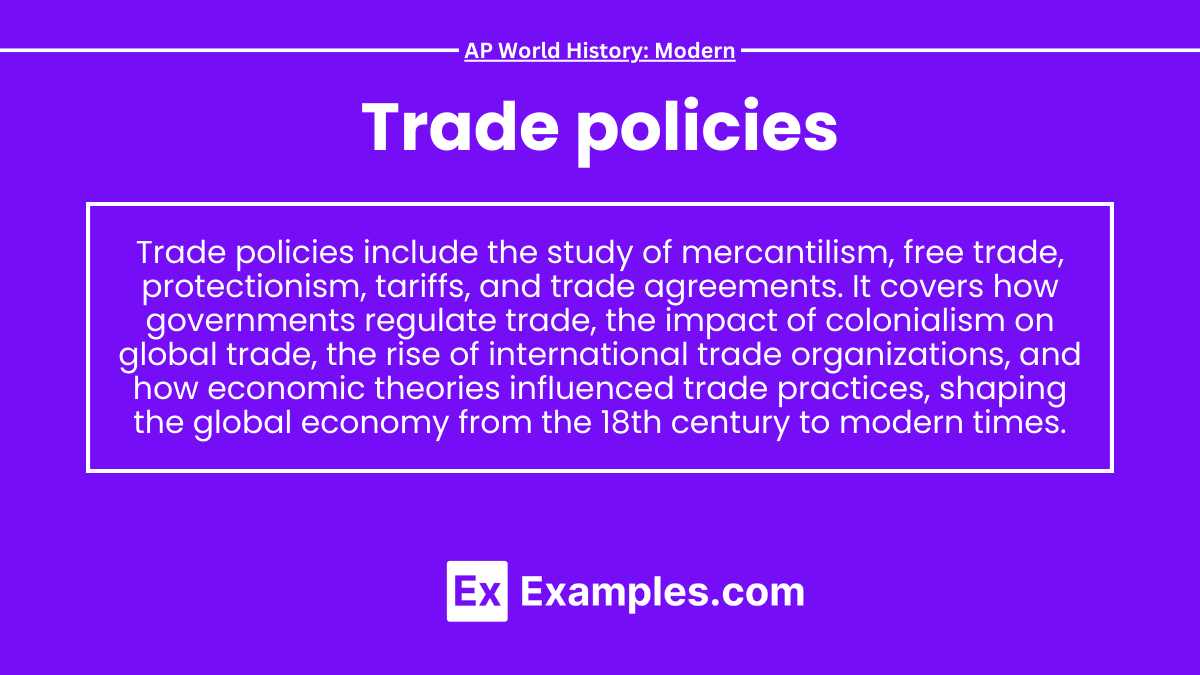Trade policies have significantly influenced global interactions and power dynamics throughout history. From mercantilism’s wealth accumulation to free trade’s open markets, and protectionism’s tariffs, these policies shaped empires, economies, and international relations. Understanding trade policies reveals how nations pursued economic interests, expanded influence, and responded to globalization, making it a crucial aspect of world history.
Learning Objective
In studying “Trade Policies” for AP World History: Modern, you should learn to identify the key trade policies that shaped global commerce, including protectionism, free trade, and mercantilism. Analyze how trade agreements, tariffs, and regulations influenced economic relationships between nations and impacted local economies. Evaluate the role of trade policies in fostering economic growth, inequality, and political tensions, and explore how changes in global trade policies have shaped international alliances, economic competition, and the global economy in both historical and modern contexts.
1. Mercantilism (16th to 18th Century)
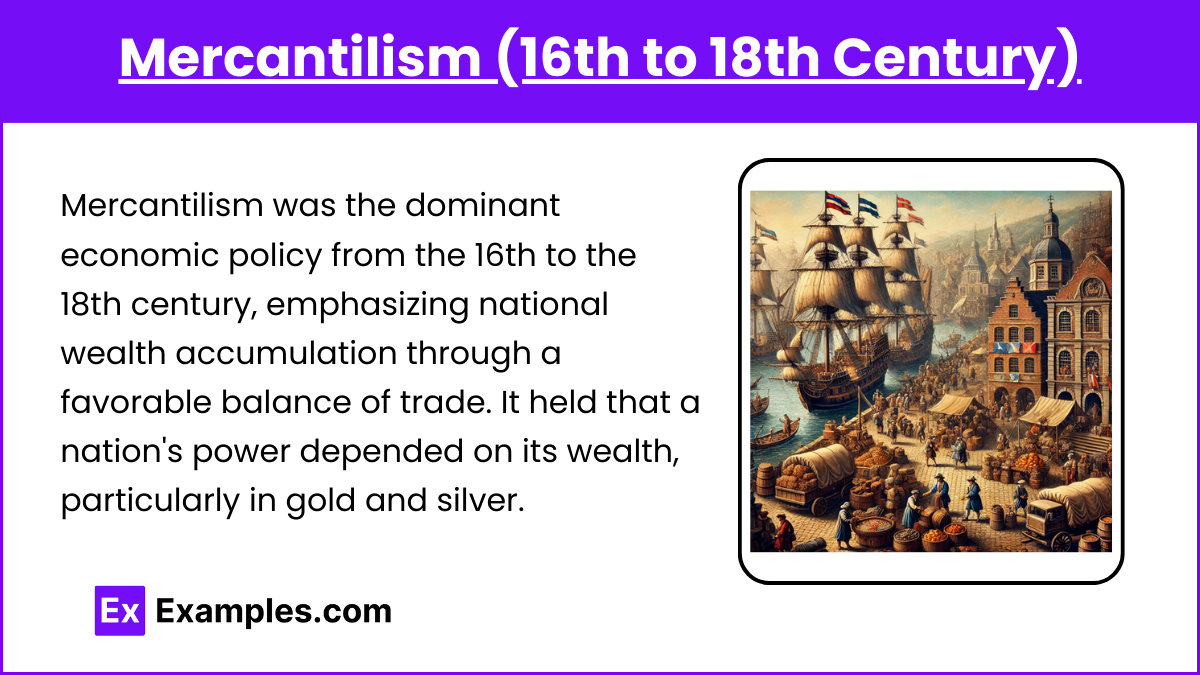
- Mercantilism was the dominant economic policy from the 16th to the 18th century, emphasizing national wealth accumulation through a favorable balance of trade. It held that a nation’s power depended on its wealth, particularly in gold and silver.
- Key Characteristics: Governments imposed high tariffs on imported goods, encouraged exports, and strictly regulated colonial trade to benefit the mother country. Colonies were seen as sources of raw materials and markets for finished goods.
- Impact: This policy led to intense competition between European powers for colonies, spurred overseas exploration, and caused conflicts such as the Anglo-Dutch Wars. It also laid the groundwork for colonial exploitation and the rise of European empires.
2. Free Trade and Laissez-Faire (18th to 19th Century)
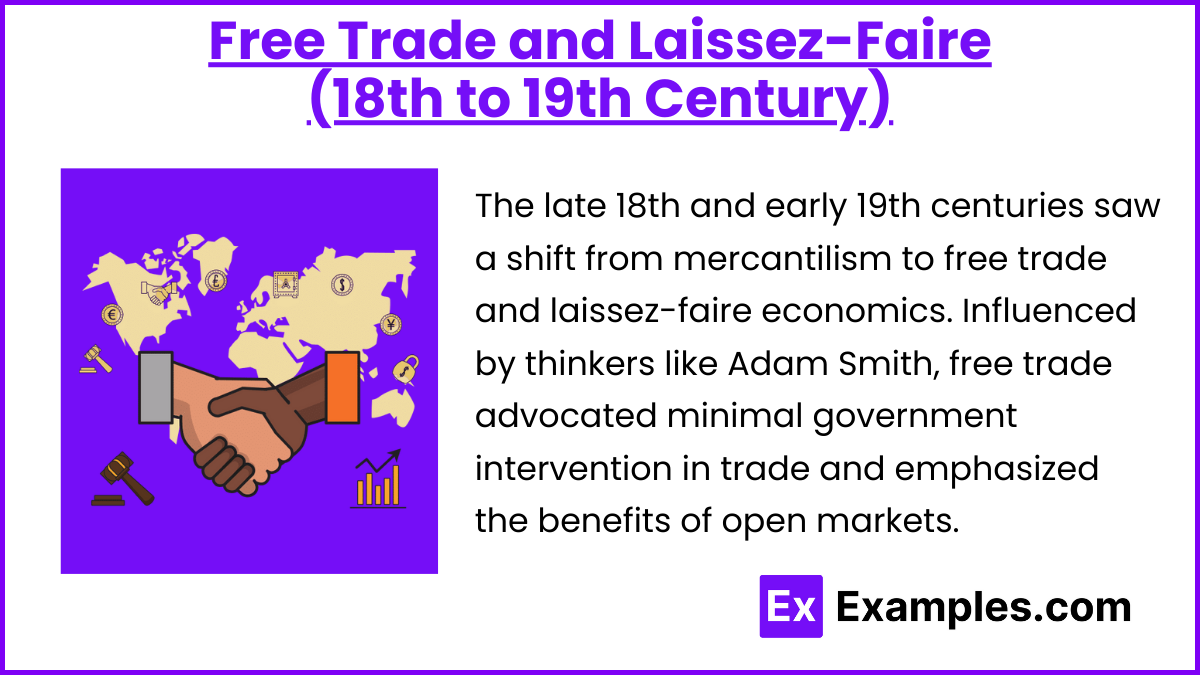
- The late 18th and early 19th centuries saw a shift from mercantilism to free trade and laissez-faire economics. Influenced by thinkers like Adam Smith, free trade advocated minimal government intervention in trade and emphasized the benefits of open markets.
- Principles: The theory of comparative advantage, introduced by David Ricardo, suggested that countries should specialize in producing goods they could create most efficiently, leading to mutual benefits. Laissez-faire policies encouraged the removal of tariffs and trade barriers.
- Historical Developments: The repeal of the Corn Laws in 1846 in Britain marked a significant move towards free trade. This shift contributed to the expansion of global trade networks, the spread of industrialization, and the growth of international commerce.
3. Protectionism and Tariffs (19th to Early 20th Century)
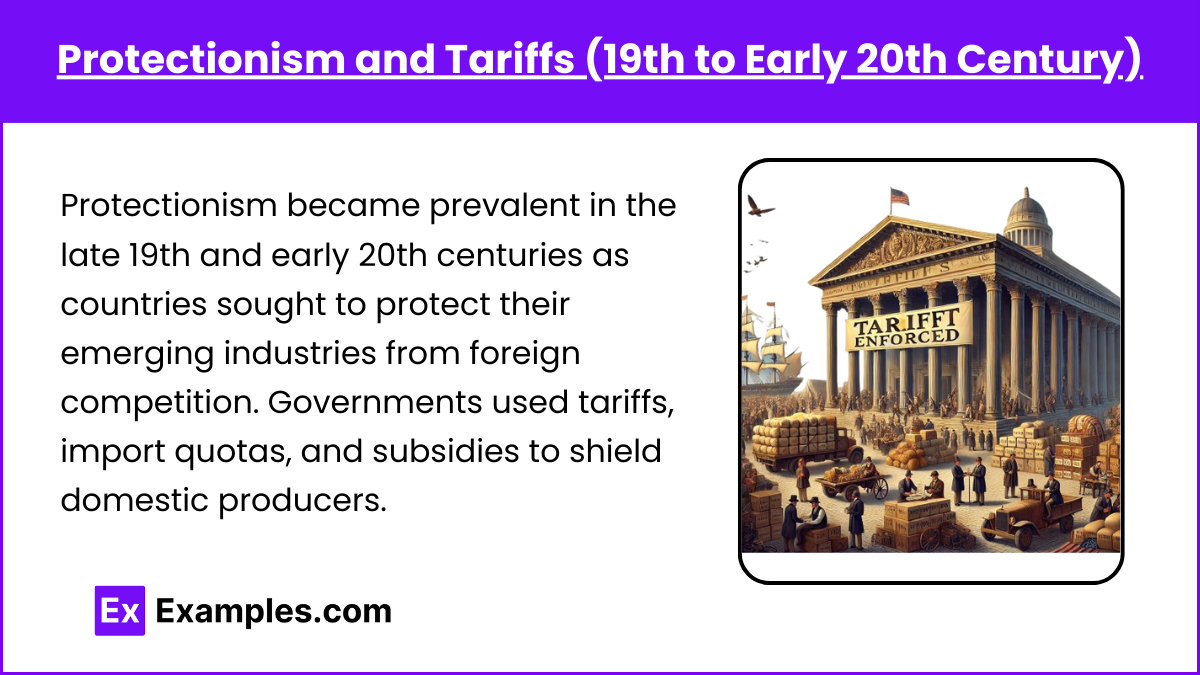
- Protectionism became prevalent in the late 19th and early 20th centuries as countries sought to protect their emerging industries from foreign competition. Governments used tariffs, import quotas, and subsidies to shield domestic producers.
- Reasons for Protectionism: The rise of industrialization prompted many nations to protect their economies from being outcompeted by established industrial powers. The U.S., Germany, and Japan, for example, implemented high tariffs to nurture their industries.
- Impact: While protectionism fostered domestic growth, it also led to trade tensions and retaliatory measures. The Smoot-Hawley Tariff Act of 1930 in the U.S., for instance, contributed to the global economic downturn during the Great Depression by reducing international trade.
4. The Bretton Woods System (Post-World War II)
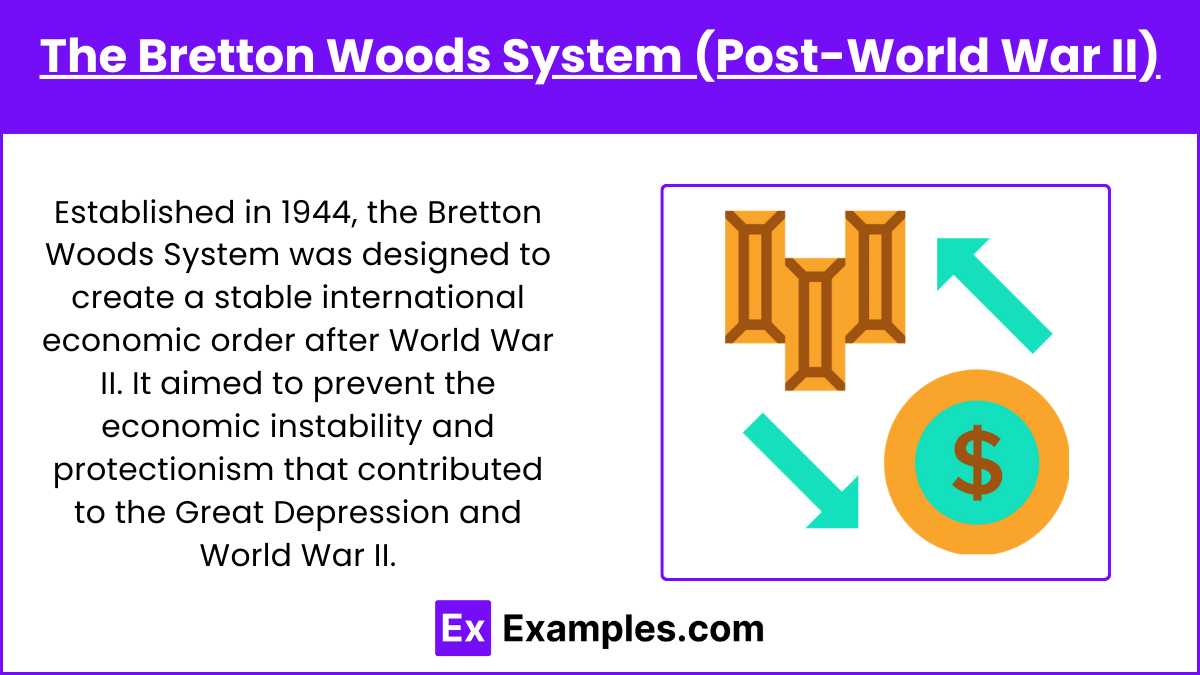
- Established in 1944, the Bretton Woods System was designed to create a stable international economic order after World War II. It aimed to prevent the economic instability and protectionism that contributed to the Great Depression and World War II.
- Key Features: The system pegged national currencies to the U.S. dollar, which was convertible to gold. It also established institutions like the International Monetary Fund (IMF) and the World Bank to promote international financial stability and economic cooperation.
- Impact: The Bretton Woods System facilitated the expansion of global trade and investment, leading to rapid economic growth in the post-war period. However, it eventually collapsed in 1971 when the U.S. ended the gold convertibility of the dollar, leading to a shift to floating exchange rates.
5. Regional Trade Agreements (RTAs)

- In the late 20th and early 21st centuries, regional trade agreements (RTAs) became increasingly common, promoting trade liberalization among specific groups of countries. These agreements aimed to reduce tariffs, eliminate trade barriers, and enhance economic cooperation within regions.
- Examples: The European Economic Community (EEC), formed in 1957, later evolved into the European Union (EU), establishing a common market among member states. The North American Free Trade Agreement (NAFTA), signed in 1994 between the U.S., Canada, and Mexico, aimed to boost trade by removing barriers.
- Effects: RTAs have fostered regional economic integration, increased trade volumes, and promoted investment. However, they have also raised concerns about unequal benefits, loss of sovereignty, and challenges to global trade norms set by organizations like the World Trade Organization (WTO).
Examples
Example 1: Mercantilism
European powers in the 16th-18th centuries used mercantilism to accumulate wealth by controlling colonies, restricting imports, and promoting exports to enhance national power and economic dominance.
Example 2: The Navigation Acts
Britain’s Navigation Acts (1651-1849) restricted colonial trade, requiring goods to be transported on British ships. This ensured British control over colonial resources and reinforced mercantilist policies.
Example 3: The Corn Laws
Britain’s Corn Laws (1815-1846) imposed tariffs on imported grain to protect domestic farmers. Their repeal marked a shift toward free trade and economic liberalization.
Example 4: Smoot-Hawley Tariff Act
The U.S. passed this act in 1930, raising tariffs on imported goods, aiming to protect domestic industries. It worsened the Great Depression by hindering international trade.
Example 5: NAFTA (North American Free Trade Agreement)
Established in 1994 between the U.S., Canada, and Mexico, NAFTA reduced trade barriers, promoted free trade, and enhanced economic integration across North America.
MCQs
Question 1
Which of the following best describes the main goal of mercantilist trade policies during the 16th to 18th centuries?
A) Promoting free trade among nations
B) Accumulating wealth by achieving a favorable balance of trade
C) Reducing tariffs on imported goods
D) Establishing regional trade agreements
Answer: B) Accumulating wealth by achieving a favorable balance of trade
Explanation:
Mercantilist trade policies aimed to maximize a nation’s wealth by exporting more goods than importing. This was achieved by imposing high tariffs on imports, encouraging exports, and exploiting colonies for raw materials. The primary goal was to accumulate precious metals like gold and silver, which were seen as indicators of national wealth and power.
Question 2
What was the primary purpose of the Smoot-Hawley Tariff Act of 1930 in the United States?
A) To encourage free trade among nations
B) To reduce tariffs on imported goods
C) To protect American industries from foreign competition
D) To establish trade agreements with Europe
Answer: C) To protect American industries from foreign competition
Explanation:
The Smoot-Hawley Tariff Act was enacted to protect American industries during the Great Depression by imposing high tariffs on imported goods. The intention was to encourage Americans to buy domestically produced goods. However, this policy backfired, leading to trade wars and a decline in global trade, which further deepened the economic crisis.
Question 3
Which of the following trade policies led to the shift from protectionism to free trade in 19th-century Britain?
A) The Navigation Acts
B) The Smoot-Hawley Tariff Act
C) The Corn Laws
D) The Bretton Woods Agreement
Answer: C) The Corn Laws
Explanation:
The Corn Laws were tariffs and restrictions on imported grain in Britain, designed to protect domestic agriculture. However, they were repealed in 1846 due to growing demand for cheaper food and free trade. This repeal marked a significant shift toward free trade policies, making Britain one of the first nations to embrace economic liberalization.

